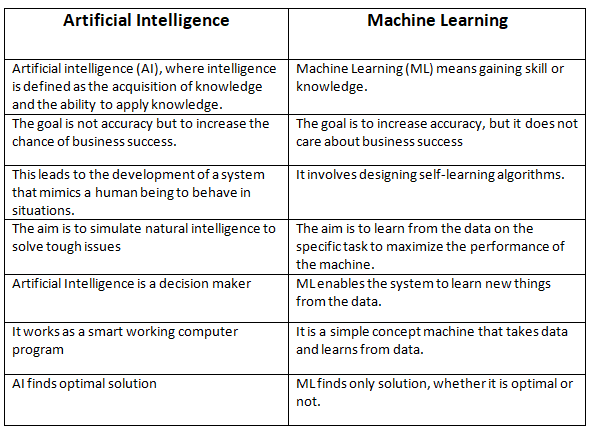While many competitors are nearly as good, ChatGPT-4 currently has no equal when it comes to creative writing, handling long-form queries and prompts and engaging in in-depth conversations, according to the Times.
The source of the Economic Times’ report is a popular AI rating service, LMArena.
Volunteers visiting LMArena evaluate AI by testing two unidentified and randomly selected chatbots — and then rating which chatbot responds to their prompt best.
In other news and analysis on AI writing:
*Facebook’s Parent Company Promising ChatGPT Competitor: Facebook inventor Mark Zuckerberg is currently developing a direct competitor to ChatGPT, according to Euro News.
Zuckerberg already has AI software – dubbed Llama – that competes on par with the AI software undergirding ChatGPT.
But so far, Zuckerberg’s AI has only been integrated into various platforms owned by Facebook parent company Meta – and never unveiled as a stand-alone, ChatGPT competitor.
*AI Now Great at Conducting Interviews, Too: Veteran journalist Alex Kantrowitz has discovered a disturbing truth.
Not only can AI write incredibly well: It can also conduct interviews like a news reporter.
Case in point: Kantrowitz says a fellow journalist – Evan Ratliff – recently used voice-powered AI to conduct an interview with a tech CEO.
The result, according to Kantrowitz: “When Ratliff listened to the recording, he was surprised to find the CEO really opened up.
“He was a little more forthcoming with the AI than he was with me,” Ratliff told me.
“There’s a quality of, you don’t necessarily feel like there’s someone there and you might be a little more intimate than you would have otherwise. And that can be very valuable in an interview for a reporting project.”
*ChatGPT-Maker Mulling $20,000/Month Charge for Advanced AI Agents: AI’s Next Big Thing – AI agents that can work autonomously and do things like operate on the Web on your behalf – may be coming with a hefty price tag.
ChatGPT-Maker OpenAI is reportedly weighing a $20,000/month charge for a PhD-level agent designed to do highly advanced research for you.
Meanwhile, AI software developer agents might go for $10,000/month and a knowledge worker agent is being floated at $2,000/month.
Wow — from ‘AI collaborator’ to ‘AI employee.’
That was fast.
*Microsoft Copilot Offers More Freebies: Users of ChatGPT competitor MS Copilot now have two more reasons to stick with the chatbot: Free access to ThinkDeeper and voice.
Like many new deep research tools cropping-up in the market, Copilot ThinkDeeper does a more extensive search and analysis to question as compared to the standard response from Copilot.
Meanwhile, Copilot Voice enables you to operate Copilot with your voice – rather than by using a keyboard.
*Google AI Overviews Gets an Upgrade: Writers who rely on Google AI Overviews for some research should expect better performance.
Specifically, AI Overviews – which study a number of links associated with a search and auto-generate a written summary – are now able to handle tougher questions, according to Robby Stein, VP of product, Google Search.
Plus, AI Overviews is also getting a new, experimental ‘AI Mode.’
Observes Robby Stein, VP of product, Google Search: “This new Search mode expands what AI Overviews can do with more advanced reasoning, thinking and multimodal capabilities so you can get help with even your toughest questions.
“You can ask anything on your mind and get a helpful AI-powered response with the ability to go further with follow-up questions and helpful Web links.”
*Duke University Joins Study on How to Better Embed AI in Education and Government: Duke University – along with 15 other universities – has joined OpenAI’s ‘NextGenAI Consortium’ to analyze how to better integrate AI into education and government.
Observes Brad Lightcap, OpenAI chief operating officer: “A close collaboration with universities is essential to our mission of building AI that benefits everyone.
“NextGenAI will accelerate research progress and catalyze a new generation of institutions equipped to harness the transformative power of AI.”
*ChatGPT Rival Anthropic Snags $3.5 Billion in New Funding: Anthropic – makers of the ChatGPT rival Claude chatbot – has just snagged $3.5 billion in new funding.
Anthropic was founded by former researchers from OpenAI, whose mission is to develop AI with firmer safety guardrails.
Competing in the same space when it comes to AI writing are Google Gemini, X’s Grok 3 – and hundreds of custom-tailored AI writing solutions specially designed for marketing, education, technical writing, law, health and other genres.
*New AI Email Marketing Tool Released: A new AI-powered email marketing platform – Stripo – is promising enhanced automation for email marketers.
Stripo’s AI Assistant – according to Oleksandra Khlystova, PR team lead, Stripo — enhances the email creation process by:
~Generating emails instantly – AI-powered automation reduces time spent on production
~Optimizing email design and structure – AI ensures well-structured layouts while allowing users to fine-tune branding
~Improving content clarity – AI-generated emails maintain strong readability, minimizing the need for manual editing
*AI BIG PICTURE: New Study Finds AI-Powered Writing a Big Hit Among Many White Collar Pros: Stanford University researchers have found that AI writing is being heavily embraced by many white collar workers.
Observes writer Matthias Bastian: “The impact is particularly noticeable in press releases, where up to 24% of content now comes from generative AI systems, or shows significant AI modification.
“The researchers suspect that actual AI adoption rates are higher than their analysis suggests.
“It likely missed heavily human-edited content and text from advanced AI models that closely mimic human writing.
“The study also didn’t examine other potential AI writing use cases, such as social media content creation.”

Share a Link: Please consider sharing a link to https://RobotWritersAI.com from your blog, social media post, publication or emails. More links leading to RobotWritersAI.com helps everyone interested in AI-generated writing.
–Joe Dysart is editor of RobotWritersAI.com and a tech journalist with 20+ years experience. His work has appeared in 150+ publications, including The New York Times and the Financial Times of London.
The post New ChatGPT-4.5 Leads the Pack appeared first on Robot Writers AI.



 Image taken from the front cover of the Future of AI Research report.
Image taken from the front cover of the Future of AI Research report.
